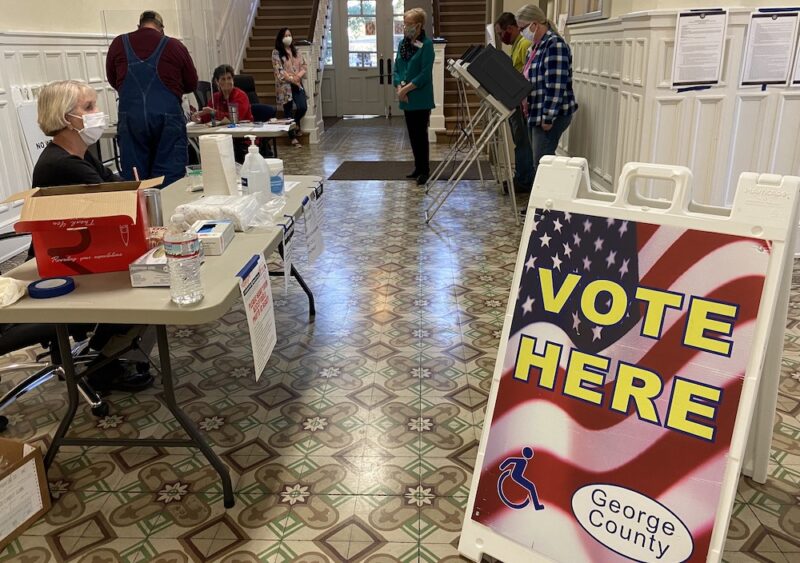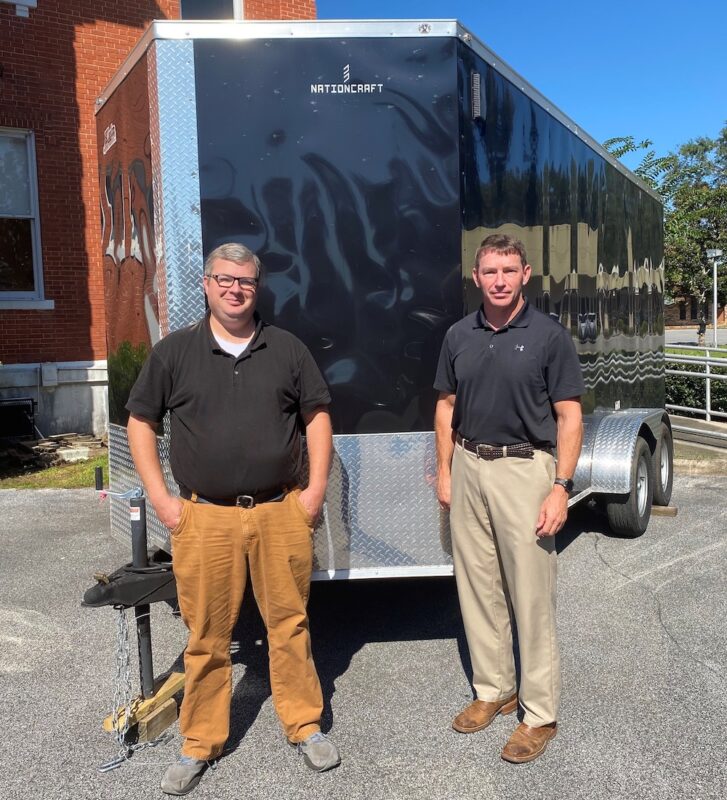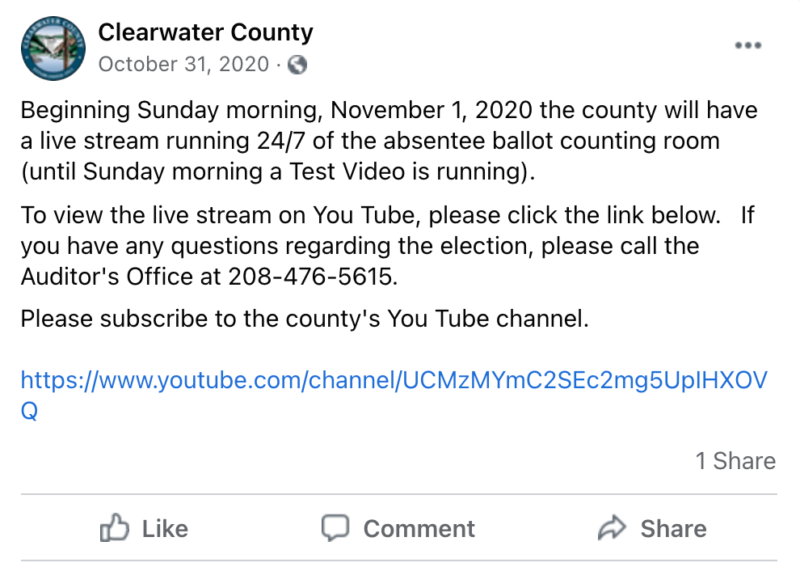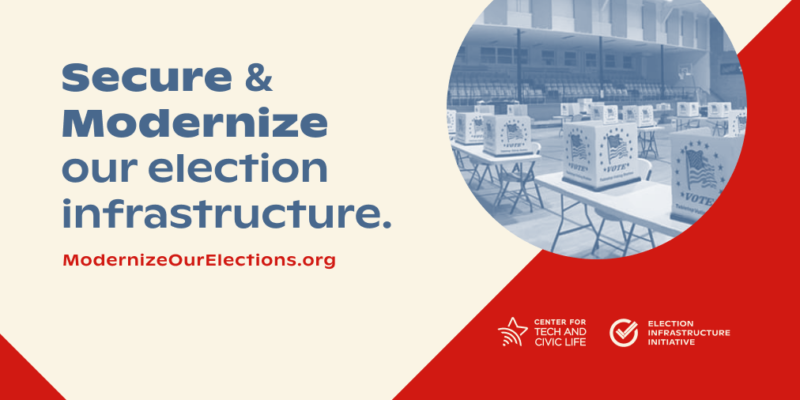2020 Election Funding Helped Fill Gaps in Election Infrastructure
This spotlight was featured in our ELECTricity newsletter in September 2021. Sign up to receive more success stories from election offices across the country.
Election officials are great at coming up with creative ways to encourage participation and improve voters’ experiences. Often, they’re able to do this despite being on a tight budget. But elections are expensive, and even the most innovative election official cannot fully serve their voters without robust funding. This became apparent in 2020, when election officials had the task of running a presidential election during a pandemic. Many did not have access to funds that would make it possible for voters and poll workers to stay safe.
In response, CTCL established a COVID-19 Response grant program in the fall of 2020. We distributed grants of at least $5,000 to any local election jurisdiction in the country that applied and was verified as legitimate. Those funds proved to be essential for election administrators, covering necessities like personal protective equipment, temporary staffing, and election technology.
In this month’s spotlight article, we’re highlighting a few jurisdictions that used CTCL’s grant funding to strengthen their election infrastructure. Their stories demonstrate that when election officials have sufficient funding, they can accomplish so much—for voters and for our democracy.
Responding to Natural Disaster in George County, Mississippi
George County, Mississippi is a small community of about 15,000 voters. Known for its bountiful watermelon crop and the state’s largest annual Christmas parade, George County is located in southeastern Mississippi. It’s a bedroom community with many of its residents working in Mobile, Alabama and along Mississippi’s gulf shore.
George County’s proximity to the Gulf of Mexico means it’s no stranger to hurricanes. And those storms can sometimes interfere with elections. Within a week of the 2020 General Election, the county was hit by Hurricane Zeta. “The tree damage that we experienced from this storm was as bad or worse than any storm we have ever experienced, including Hurricane Katrina,” says Chad Welford, the Circuit Clerk. As a result of the storm, all 22 of George County’s voting precincts lost power just days before the election.
“In the aftermath of Hurricane Zeta there were many concerns and needs within our county,” Chad reflects. “A routine question that our Circuit Clerk’s Office and Election Commissioners were asked was: ‘How about the election? How is that going to work?’” Chad and the Election Commissioners immediately began to prepare for a worst case scenario for Election Day. They knew they needed generators to ensure that all of their voting precincts would have power. “People aware of our budget knew that we did not have extra funds to take care of the expense,” Chad says. The county had suddenly incurred massive clean-up costs from Hurricane Zeta and “the issue of receiving federal funding was, at the time, very questionable,” says Chad.
Fortunately, the election office was able to use funding from CTCL’s COVID-19 Response grant to purchase the necessary generators, lights, and power cords. “The funding we received from CTCL was a huge relief for everyone involved,” Chad reflects.

While the local electric companies worked to restore power, several of George County’s precincts were still without power less than 24 hours before Election Day. The generators turned out to be a valuable purchase. “On Election Day, we still had to run generators at precincts that lost power for periods of time,” says Chad. This equipment assured voters that the election would proceed with minimal disruption. Voters were grateful for the George County team for making the election run smoothly under intense pressure and such challenging circumstances. “The feedback that we received from our voters was overwhelmingly positive,” Chad reflects.
For election offices with limited space, storing this type of equipment can be almost as important as obtaining it in the first place. That’s why the George County Election Commissioners also purchased an enclosed trailer with the funds from CTCL. The trailer frees up space in their small office while keeping the generators nearby in case another natural disaster strikes.

Installing Security Systems in Clearwater County, Idaho
Storage was similarly a concern for Clearwater County Clerk, Carrie Bird, leading up to the 2020 General Election. In her case, she needed to adapt to Idaho’s new rules about how to store absentee ballots.
Surrounded by national forests, Clearwater County, Idaho has a rich history. Lewis and Clark arrived in Clearwater County in 1805 as part of their expedition across the western U.S. And in 1860, thousands of people flocked to the county during the gold rush—the county seat, Orofino, means “fine gold.” Today, it’s home to 8,700 people. Since the county is small, Carrie is the sole person responsible for overseeing and managing elections there. She has been working at the county since 1991, and has served as Clerk for over a decade.
Like many jurisdictions in the country, Clearwater County saw a sharp increase in absentee voting in the 2020 General Election. Nearly three times more absentee ballots were cast in 2020 compared to 2016 (1,837 vs. 686). On previous Election Nights, other county workers would join Carrie and staff after their workdays ended to help count the ballots. But in 2020, it was infeasible to wait until Election Night to begin processing absentee ballots. “Because of the large number of ballots we were going to process and the required social distancing requirements for Covid, we recognized that we were going to need to process ballots sooner and have them ready for Election Night,” Carrie says.
Thankfully, the State of Idaho made an exception in 2020 that allowed election officials to begin opening and scanning absentee ballots up to 7 days prior to Election Day. However, the State created a new statute that required the absentee ballots to be stored in an electronic access-controlled room under 24-hour video surveillance. Even though Carrie and the other county workers could get a head start processing absentee ballots, they didn’t have the proper recording equipment nor the electronic access door lock to comply with the new rule.
Carrie realized that CTCL’s COVID-19 Response grant funds could help. She recruited the assistance of the Clearwater County Emergency Manager, Don Gardner to assist her and provide guidance for the best use of these funds. It was decided to use the funds to purchase the video surveillance equipment and door lock that was required to meet the statute. Having these additional funds freed up some of the county’s budget to hire additional employees. Those extra workers were essential to help open and process the large number of absentee ballots they received.
Carrie was glad that their new recording equipment helped Clearwater County comply with the new statute. She thinks the live stream may have also helped inspire voters’ confidence in the election. “We felt it was important to have transparency so that the public could view and observe the absentee ballot opening and counting process,” says Carrie.
The new door look ensured that election workers could safely store the ballots in the days before the election. Plus, it served as an important piece of protection for the election workers inside the ballot room. As physical security continues to be a top concern for election officials, having a designated, secure space to process ballots is invaluable.
Updating Voting Equipment
The number of Americans who voted by mail increased in 2020. But voting in person continues to be the most popular method for casting a ballot. So maintaining and updating voting equipment is a crucial way to support in-person voters. Election officials throughout the country brought their voting machines into the 21st century using the funds from CTCL. McCracken County, Kentucky purchased new ballot marking devices to replace their 12-year old voting equipment that had reached the end of its life cycle. And Rowan County, Kentucky purchased new voting equipment to replace their 20-year old voting machines, several of which had failed to pass recent inspections. This updated equipment will help both voters and election workers have a smooth experience at the polls. Plus, many of these new devices support accessible voting for voters with visual or dexterity impairments. CTCL’s grants also funded the purchase of laptops, tablets, document scanners, and tabulators in jurisdictions like the City of Saginaw, Michigan and Burlington County, New Jersey.
Responding to Election Officials’ Needs: The Election Infrastructure Initiative
Infrastructure challenges—like the ones Chad and Carrie encountered in 2020—affect election officials across the country. Natural disasters, security concerns, and obsolete equipment are issues that so many election administrators can relate to.
We’re fortunate that our grants program could step in and meet an urgent need in 2020. But we understand that the lack of adequate, predictable funding is perhaps the greatest barrier election officials face in doing their best work. Election officials deserve access to sufficient financial support to secure the infrastructure they need to serve their voters. Those funds not only allow them to meet state and federal requirements, but could also help them come up with innovative solutions tailored to their unique needs.
CTCL has always pledged to support election officials in overcoming barriers to administering professional, inclusive, and secure elections. That’s why we’re advocating for the federal government to invest in our state and local elections. We invite you to learn more at ModernizeOurElections.org.


